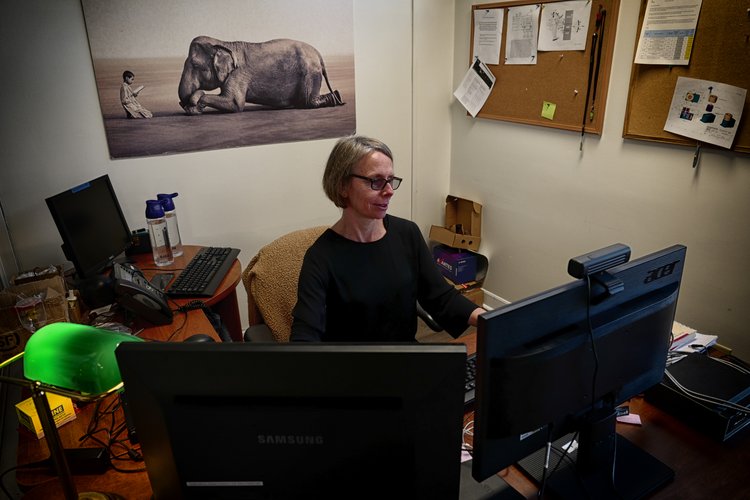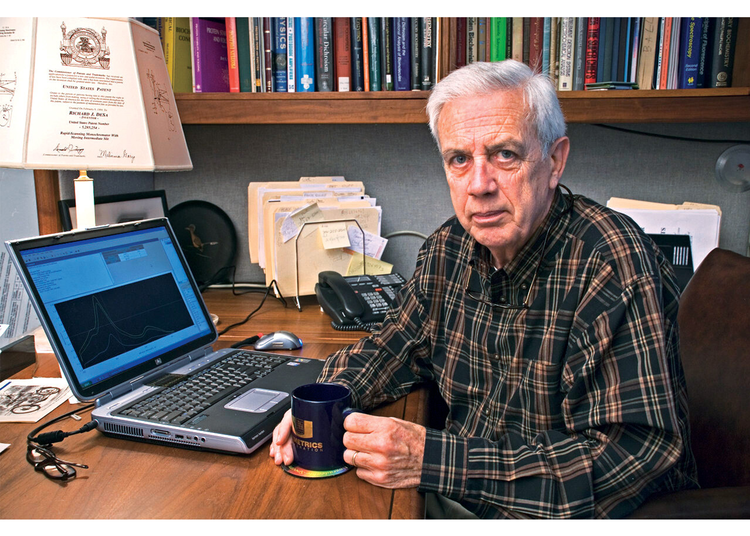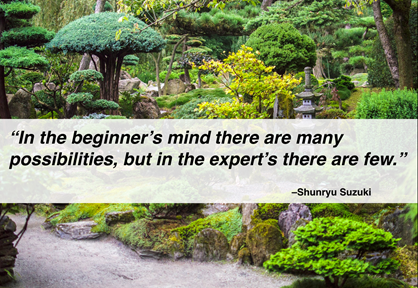Uv/vis/nir - Truths
Wiki Article
Unknown Facts About Circularly Polarized Luminescence
Table of ContentsNot known Facts About Circular DichroismGetting The Circular Dichroism To WorkThe Best Guide To Circularly Polarized LuminescenceHow Uv/vis can Save You Time, Stress, and Money.Not known Incorrect Statements About Circular Dichroism 6 Easy Facts About Circular Dichroism ShownExcitement About Uv/visThe Single Strategy To Use For SpectrophotometersThe 4-Minute Rule for Uv/vis/nirAn Unbiased View of Circular DichroismGetting The Circular Dichroism To WorkIndicators on Circular Dichroism You Should KnowLittle Known Facts About Spectrophotometers.
It is then scanned through the sample and the referral solutions. Fractions of the occurrence wavelengths are transferred through, or shown from, the sample and the recommendation. The resultant light strikes the photodetector device, which compares the relative intensity of the two beams. Electronic circuits convert the relative currents into linear transmission percentages and/or absorbance/concentration values.The transmission of a recommendation compound is set as a standard (datum) value, so the transmission of all other compounds are taped relative to the initial "zeroed" substance. The spectrophotometer then converts the transmission ratio into 'absorbency', the concentration of specific parts of the test sample relative to the initial compound.
Because samples in these applications are not easily available in large amounts, they are especially matched to being evaluated in this non-destructive technique. In addition, precious sample can be conserved by utilizing a micro-volume platform where as low as 1u, L of sample is needed for total analyses. A brief description of the treatment of spectrophotometry includes comparing the absorbency of a blank sample that does not consist of a colored substance to a sample that contains a colored substance.
Getting The Circularly Polarized Luminescence To Work
In biochemical experiments, a chemical and/or physical home is picked and the treatment that is used is specific to that home in order to obtain more details about the sample, such as the amount, purity, enzyme activity, and so on. Spectrophotometry can be utilized for a variety of techniques such as identifying ideal wavelength absorbance of samples, determining optimal p, H for absorbance of samples, determining concentrations of unidentified samples, and determining the p, Ka of various samples.: 21119 Spectrophotometry is also a handy process for protein purification and can also be used as a method to produce optical assays of a substance.It is possible to understand the concentrations of a 2 element mixture using the absorption spectra of the standard services of each component. To do this, it is required to understand the extinction coefficient of this mix at two wave lengths and the extinction coefficients of solutions that contain the known weights of the 2 components.

How Circular Dichroism can Save You Time, Stress, and Money.
Many spectrophotometers are used in the UV and visible regions of the spectrum, and a few of these instruments also operate into the near-infrared area also. The concentration of a protein can be approximated by measuring the OD at 280 nm due to the existence of tryptophan, tyrosine and phenylalanine (https://disqus.com/by/julieanndesalorenz/about/).This technique requires a spectrophotometer capable of determining in the UV area with quartz cuvettes.: 135 Ultraviolet-visible (UV-vis) spectroscopy includes energy levels that thrill electronic transitions. Absorption of UV-vis light thrills particles that are in ground-states to their excited-states.
20. 8 O.D. Ink makers, printing business, fabrics vendors, and many more, require the information offered through colorimetry. They take readings in the area of every 520 nanometers along the noticeable region, and produce a spectral reflectance curve or a data stream for alternative discussions. These curves can be used to check a brand-new batch of colorant to inspect if it makes a match to specifications, e.
The smart Trick of Uv/vis That Nobody is Talking About
Traditional visible area spectrophotometers can not find if a colorant or the base material has fluorescence. This can make it difficult to manage color issues if for example one or more of the printing inks is fluorescent. Where a colorant consists of fluorescence, a bi-spectral fluorescent spectrophotometer is used (https://disqus.com/by/julieanndesalorenz/about/). There are 2 major setups for visual spectrum spectrophotometers, d/8 (round) and 0/45.Scientists use this instrument to measure the amount of compounds in a sample. If the compound is more concentrated more light will be taken in by the sample; within small ranges, the Beer, Lambert law holds and the absorbance in between samples differ with concentration linearly. When it comes to printing measurements 2 alternative settings are commonly utilized- without/with uv filter to manage better the effect of uv brighteners within the paper stock.
The Only Guide for Uv/vis
Some applications need small volume measurements which can be performed with micro-volume platforms. As explained in the applications section, spectrophotometry can be used in both qualitative and quantitative analysis of DNA, RNA, and proteins. Qualitative analysis can be used and spectrophotometers are used to record spectra of compounds by scanning broad wavelength regions to determine the absorbance homes (the strength of the color) of the substance at each wavelength.
Uv/vis - An Overview
One major aspect is the type of photosensors that are readily available for various spectral areas, but infrared measurement is likewise challenging since essentially whatever discharges IR as thermal radiation, particularly at wavelengths beyond about 5 m. Another complication is that numerous products such as glass and plastic take in infrared, making it incompatible as an optical medium.Retrieved Dec 23, 2018. Fundamental Laboratory Techniques for Biochemistry and Biotechnology (Second ed.). The vital guide to analytical chemistry.
Oke, J. B.; Gunn, J. E.
Getting My Circularly Polarized Luminescence To Work

Ninfa AJ, Ballou DP, Benore M (2015 ). Fundamental Laboratory Methods for Biochemistry and Biotechnology (3, rev. ed.). UV/Vis/NIR. Lab Equipment.
Not known Incorrect Statements About Spectrophotometers
"Applied Spectrophotometry: Analysis of a Biochemical Mix". Biochemistry and Molecular Biology Education. Journal of Biochemistry Education.The Facts About Spectrophotometers Revealed
U.S. Department of Commerce National Bureau of Standards unique publication; 378. Washington, D.C.: U.S. National Bureau of Standards.The process begins with a controlled light that brightens the analyzed sample. When it comes to reflection, as this light interacts with the sample, some is soaked up or emitted. The discharged light travels to the detector, which is analyzed, measured, and provided as industry-standard color scales and indices.
Industry governing bodies typically specify specific metrics for specific items, such as Tomato and Coffee indices. The streamlined math appears like this: Where R is the reflection coefficient. All terms are examined over the noticeable spectrum from 400 to 700 nm. In the case of transmission, when the light connects with the sample, it is either soaked up, shown, or sent.
About Uv/vis/nir
Examples consist of APHA (American Public Health Association) for watercolor and purity analysis, ASTM D1500 for petrochemical color analysis, edible oil indices used in food, and color analyses of beverages. The simplified math looks like this:. Where T is the transmission coefficient. All terms are assessed over the noticeable spectrum from 400 to 700 nm.Image Credit: Matej Kastelic/ Dr. Arnold J. Beckman and his colleagues at the National Technologies Laboratories first developed the spectrophotometer in 1940. In 1935 Beckman established the company, and the discovery of the spectrophotometer was their most ground-breaking invention.
Little Known Facts About Uv/vis.
99% precision. Over time, scientists kept enhancing the spectrophotometer design to boost its efficiency. For circumstances, the UV capabilities of the model B spectrophotometer were enhanced by replacing the glass prism with a quartz prism. Ultimately, the Model DU was produced, consisting of a hydrogen light and other improvements. This instrument was utilized in commercial labs, centers, and chemistry and biochemistry departments.After 1984, double-beam versions of the gadget were developed. The addition of external software application with the arrangement of onscreen screens of the spectra came in the 1990s. Generally, a spectrophotometer is made up of 2 instruments, specifically, a spectrometer and a photometer. A standard spectrophotometer includes a light, a monochromator, a collimator for straight light beam transmission, a cuvette to position a sample, and a photoelectric detector.
7 Easy Facts About Uv/vis/nir Described
There are various kinds of spectrophotometers in various shapes and sizes, each with its own purpose or functionality. A spectrophotometer identifies how much light is reflected by chemical elements. UV/Vis. It determines the difference in light strength based on the click site overall amount of light presented to a sample and the quantity of light beam that travels through the sample service
As per the instrument's style, the sample is put between the spectrometer and the photometer. After the light is travelled through the sample, the photometer determines its strength and displays the reading. A spectrophotometer is used to figure out the concentration of both colorless and colored solutes in a solution. This instrument is used to identify the rate of a reaction.
Report this wiki page